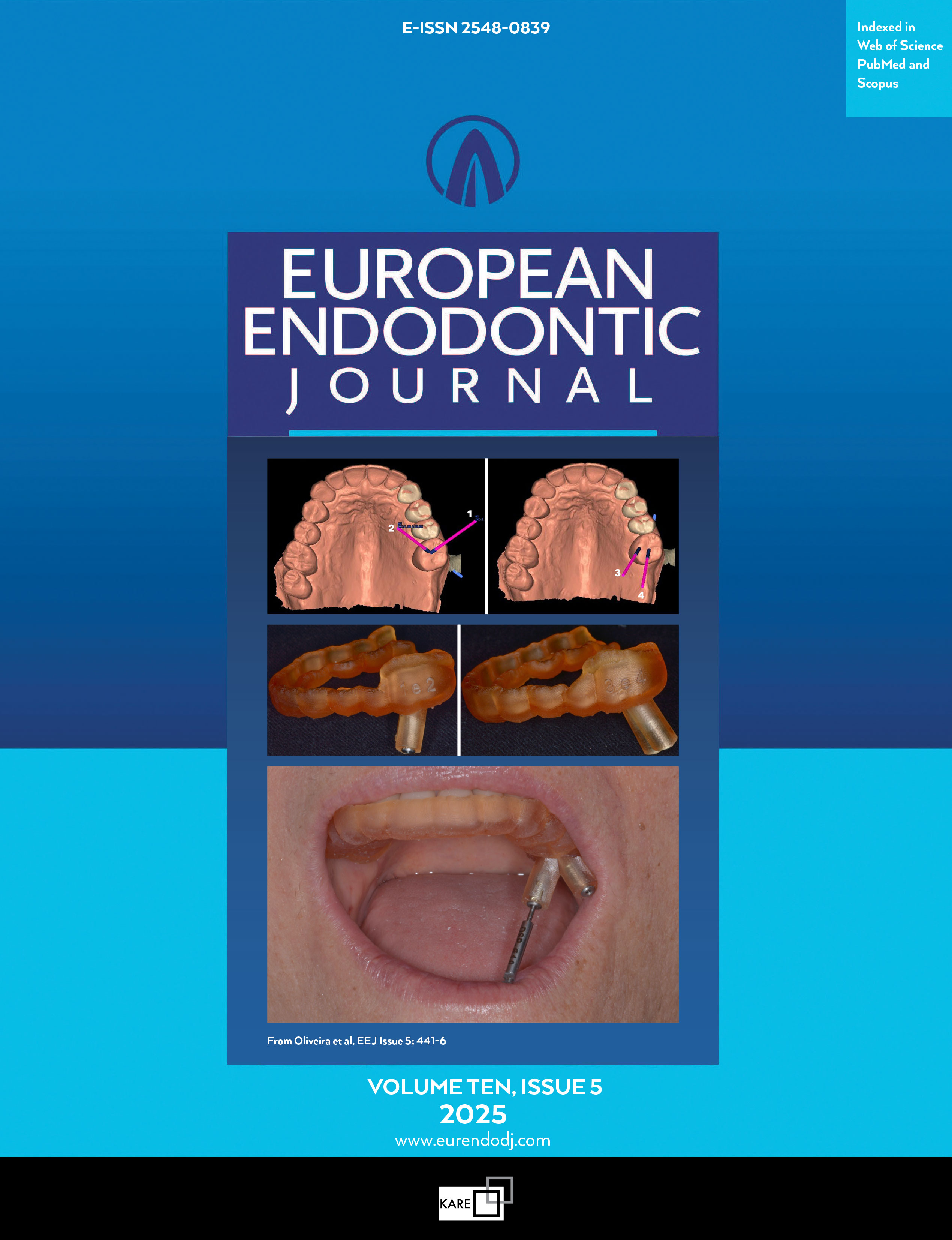Metrics
2024 IMPACT FACTOR
5 year Impact Factor
Eigenfactor Score
2024 CiteScore
Journal Citation Reports
(Clarivate 2025, JIF Rank)
Histopathological Investigation of Dental Pulp Reactions Related to Periodontitis
Mohammad Sabeti1, Hossein Tayeed2, Gregori Kurtzman3, Fatemeh Mashhadi Abbas4, Mohammadreza Talebi Ardakani51Department of Endodontics, School of Dentistry, University of California, San Francisco2Department of Periodontics, Dental School, Shahed University, Tehran, Iran
3Private practice, Silver Spring, Washington, DC, USA
4Department of Oral and Maxillofacial Pathology, Dental School, Shahid Beheshti University of Medical Tehran, Iran
5Department of Periodontology, Dental School, Shahid Beheshti University of Medical Science, Tehran, Iran
Objective: Since the 1960s, there has been contradictory evidence regarding the association between periodontal pathology and the status of the pulp. The purpose of this study was to evaluate the histopathological changes of pulp tissue with severe periodontal disease, including vertical bone loss involving the major apical foramen, and compared them with the histological pulpal status of teeth with healthy periodontium.
Methods: This case-controlled study included 35 intact teeth with severe periodontitis of hopeless prognosis (test group) and 35 teeth without periodontitis extracted for orthodontic reasons (control group). For each tooth, periodontal and endodontic parameters such as probing depth and pulpal vitality were recorded, and the pulp tissue was evaluated histologically. The data were analysed with a significance level of 0.05.
Results: Vital pulp was observed in all specimens of both groups (P=1). Pulpal inflammation in the apical portion was observed in 81.71% of the severe periodontitis group, whereas all teeth in the control group demonstrated no signs of pulpal inflammation. Dystrophic calcification and pulp stones were observed in 7.5% of the periodontitis group and 5.7% of the healthy group (P>0.05). Pulp fibrosis was observed in 22.8% of the periodontitis group and 2.8% of the control group (P=0.012). Pulpal necrosis was not noted in either group. In the periodontitis group, internal resorption was present in 22.8% of cases (P=0.005) and external resorption was present in 80% of cases (P<0.001). In the control group, no internal or external resorption was observed in any of the specimens. No differences were noted in the study patients with regard to sex or age.
Conclusion: Periodontal disease does not significantly affect pulp vitality and pulpal calcifications. However internal and/or external resorption was significantly different between the two groups as well as apical inflammation and pulp fibrosis. (EEJ-2020-10-241)
Manuscript Language: English
(585 downloaded)


